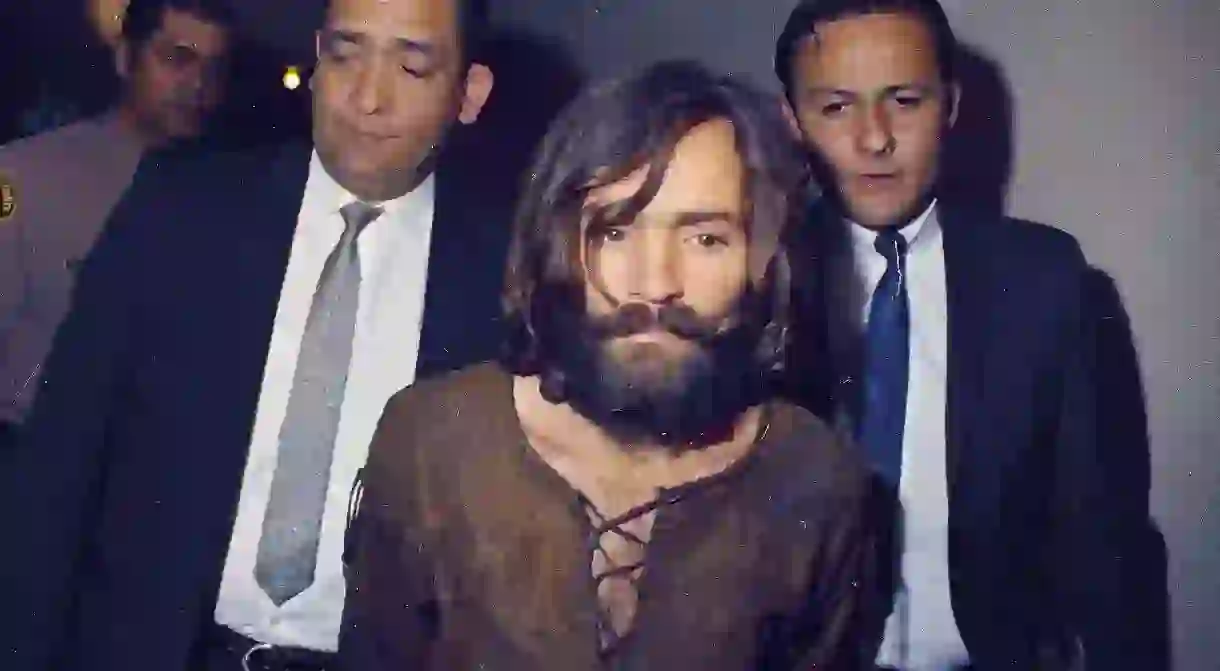5 Urgent Questions About Quentin Tarantino's Manson Murders Movie

Tarantino is finishing a script for a film about the 1969 Charles Manson murders, possibly to star Brad Pitt and Jennifer Lawrence. As Dorothy Parker almost said, “What fresh Hollywood hell is this?”
That Tarantino is planning to direct his first film based on real events comes as a mild surprise. That it will tell the story of the Charles Manson Family’s slaughter of Sharon Tate and four others at 10050 Cielo Drive in Benedict Canyon, Los Angeles, on the night of August 8–9, 1969, is a shock.
Even 48 years after those appalling events—and with Tate’s widower Roman Polanski still alive—it’s an unusually grave subject for a director with Tarantino’s penchant for comically stylized violence. It’s not as if he’s likely to bring the same approach to it that Ezra Edelman brought to last year’s O.J: Made in America.

According to The Hollywood Reporter, Brad Pitt and Jennifer Lawrence are in talks to star in the film. One strand apparently follows Tate—two weeks from giving birth when she was murdered—presumably in the weeks or days leading up to the massacre. However, “Lawrence is not considering the Tate role,” The Hollywood Reporter said, quoting an insider.
Bob and Harvey Weinstein will reportedly be involved as producers in the project, which Tarantino hopes to take before the cameras next summer. With details scant so far, here are the most pressing questions about it:
Who would Jennifer Lawrence play?
It’s hard to imagine Lawrence playing any of the Manson acolytes—Susan Atkins, Linda Kasabian, Patricia Krenwinkel—who were involved in the murder—or the coffee heiress Abigail Folger, the other female victim. A distinct possibility for Lawrence is Lynette “Squeaky” Fromme, a Manson “Family” member given a life sentence for attempting to assassinate President Gerald Ford in 1975; Fromme was released on parole in 2009.
It would make sense for Lawrence and Pitt to play police detectives, fictional or otherwise, but if Tarantino is opting for a multi-stranded film, as favored by Robert Altman or Paul Thomas Anderson, anything is possible.

Who will play Charles Manson?
At 53, Pitt is too old to play Manson (34 in August 1969). Tarantino will surely consider Jake Gyllenhaal and Robert Pattinson, though at 5′ 11½” and 6′ 1″ respectively they are theoretically too tall—Manson (now 82) is just 5′ 2″. Shia LaBeouf (5′ 9″) and Emile Hirsch (5′ 6″) are nearer the mark. Back in the day, Dennis Hopper would have been perfect—think Easy Rider and Apocalypse Now.
Who will play Sharon Tate?
Tate was 26 when she died. Dakota Fanning (23), Elizabeth Olsen (28), and Amber Heard (31) are obvious candidates. Evan Rachel Wood (29) would be excellent casting—though it would bring up the issue of her past relationship with Marilyn Manson! Actually, that would make it perfect.

If Tarantino decides to cast an actor as Polanski—who was 35 and scouting film locations in London at the time of his wife’s murder—he would have to consider Polanski lookalike Mathieu Amalric, despite his 51 years. Christoph Waltz, a double Oscar-winner in Tarantino films, is 60 and surely too old, but, hey…
What music will Tarantino use?
Too obvious for use are the Beatles’ “Helter Skelter”—which Manson interpreted as a coded prophecy of an apocalyptic race war—or the Beach Boys “Never Learn Not to Love,” which Dennis Wilson, acquainted with Manson, based on the latter’s “Cease to Exist.” Dare Tarantino use anything from Manson’s 1970 Lie: The Love and Terror Cult album.
The murders took place a week before Woodstock and four months before the Altamont Free Concert smashed the hippie dream. Yet a peace and love vibe seems unthinkable for Tarantino, even as a counterpoint to the Manson killings. He’s more likely to mine something from Jerry Fielding’s score for The Wild Bunch or a Frank Zappa song from Medium Cool, key 1969 films.

Should Tarantino want to douse the movie in the fatalistic, twilit aura of the late ’60s, he need look no further than the music of the one band that had had an eerie sense of what was about to go down in Benedict Canyon. As Greil Marcus wrote in The Doors: A Lifetime of Listening to Five Mean Years (2011):
“The appearance of the Doors marked a verge in the history of Los Angeles rock ‘n’ roll, of Los Angeles, and of the United States. That is because in their music you could hear a portent that the future, the near future, contained stories no one imagined they would want to hear, that people would not be able to turn away from, that would keep people awake, worried at the slightest anomalous sound, terrified and disgusted by their own fantasies.”
“After Charles Manson,” Marcus continued, “people could look back at ‘The End,’ ‘Strange Days,’ ‘People Are Strange,’ and ‘End of the Night,’ and hear what Manson had done as if it had yet to happen, as if they should have known, as if, in the deep textures of the music, they had.”
How gruesome will Tarantino’s Manson movie be?
This is the US$64,000 question, and it’s unsettling. Setting aside the idea that all is fair in love and art, it’s one thing for Tarantino to choreograph extreme blood-letting in the likes of Reservoir Dogs and Inglourious Basterds—it would be another to exploit cartoonishly the killings of the pregnant Tate, Folger, Jay Sebring, Wojciech Frykowski, and Steven Parent. Proceed with caution, Quentin.













